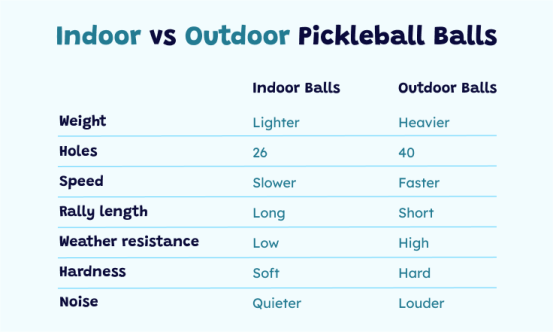In pickleball, the number of holes in a paddle can affect its performance characteristics, particularly with regard to control, power, and feel. The two common hole patterns are the 26-hole pattern and the 40-hole pattern.
26-Hole Pattern:
Control and Precision: Paddles with a 26-hole pattern typically provide better control and precision. The fewer holes mean that there is more surface area for the ball to come in contact with the paddle. This can make it easier to place the ball precisely and execute accurate shots.
Slower Ball Speed: Because there is less airflow through the paddle due to fewer holes, 26-hole paddles can generate slightly less ball speed compared to 40-hole paddles. This can be advantageous for players who prefer a slower game and rely on their finesse and placement.
Quieter: The fewer holes also tend to make these paddles quieter, which can be important for some indoor play where noise levels need to be minimized.
40-Hole Pattern:
Power and Speed: Paddles with a 40-hole pattern generally offer more power and speed. The increased number of holes allows for more airflow through the paddle, reducing air resistance and allowing for faster ball speeds. Players who want to put more power behind their shots often prefer 40-hole paddles.
Larger Sweet Spot: The additional holes can expand the sweet spot of the paddle, making it more forgiving for off-center hits. This can be beneficial for players who are still developing their skills or want a paddle that offers more forgiveness.
Louder: Due to the increased airflow, 40-hole paddles can produce a louder “pop” sound when striking the ball, which some players may find satisfying.
Post time: Sep-26-2023


